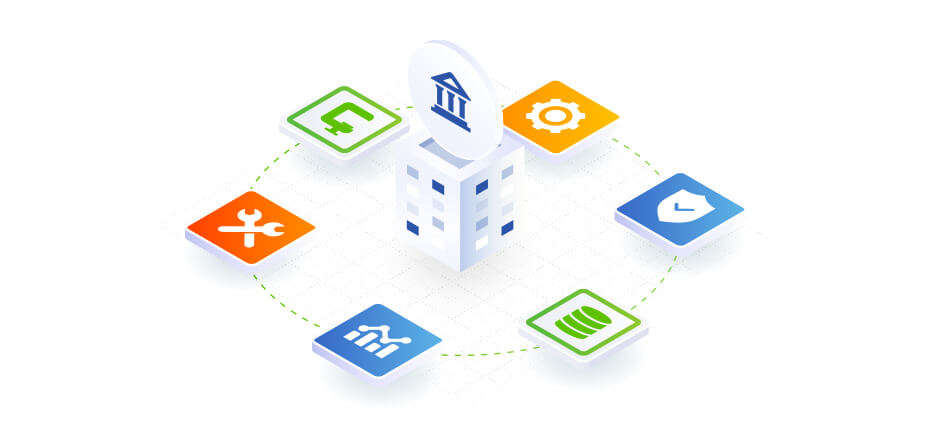With IT modernization being one of the U.S. federal government’s top priorities, it is no wonder that the Department of Defense (DoD) has data management in its crosshairs. Data is at the core of IT modernization. Therefore, the DoD has developed three modernization strategies that emphasize data management. These strategies are the DoD Cloud Strategy, the DoD Artificial Intelligence (AI) Strategy, and the DoD Digital Modernization Strategy.
This blog will cover how mass data fragmentation can adversely affect the DoD’s modernization efforts and what they can do to smooth the path for its three strategies.
Data: The Common Thread in the Three DoD IT Modernization Strategies
Unity is at the heart of the DoD Cloud Strategy. The goal is to consolidate disparate networks, data centers and cloud efforts and manage them at an enterprise level. The strategy emphasizes mission and tactical edge needs along with the requirement to account for protection and efficiency, and drives toward implementation of a cloud ecosystem. A critical requirement for this strategy is establishing platforms that can receive data and applications.
The DoD AI Strategy is ambitious, laying out a vision for artificial intelligence (AI) with the Joint Artificial Intelligence Center (JAIC) as a focal point. The JAIC is seen as playing an important role in defending against foreign interference and delivering improved intelligence. Therefore, establishing a common foundation of shared data and unified data stores is critical to its success.
The DoD Digital Modernization Strategy outlines how the department will increase agility and remain competitive in a constantly evolving digital global threat landscape. To do this, the DoD says, requires a more secure, coordinated, seamless, transparent and cost-effective architecture. Inherent in its design is a foundation for turning data into actionable information.
In a sense, the composition of the DoD is a barrier to successfully executing on its three strategies that address the federal government’s quest for IT modernization. It is the U.S. federal government’s largest department, a disjointed organization with more than 430 components. Its own composition affects its tactical edge because there is no consistent architecture and consumption across its organization and agencies. The result is a literal disconnect called mass data fragmentation. For the DoD, the root cause of data fragmentation includes the spread of data assets, which are stored in silos, and it is compounded by different clouds, 10,000 operational systems, thousands of data centers, and millions of endpoints. No concerted effort has been made to consolidate this data, so the result is individual data islands and footprints.
Mass Data Fragmentation: The Barrier to Modernization Strategy Execution
How does mass data fragmentation affect the three strategies? The proliferation of cloud options has resulted in multiple cloud implementations across the DoD, creating a fresh new collection of data silos with almost no visibility or governance of the data’s content or location. In addition, it is common practice to make and store more copies of the same data in cloud environments — on average three copies of the same data according to a recent survey. With multiple clouds for onsite backups, long-term archives, second-tier storage, test and development systems and analytics pools, mass data fragmentation is very difficult to avoid. This puts the DoD’s cloud strategy at risk.
Mass data fragmentation also inhibits the ability to use next-generation technologies such as AI and machine learning (ML). Although sometimes touted as such, AI and ML are not magic. Like anything that requires data to deliver information and insights, it is still very much “garbage in, garbage out.” AI and ML outcomes are only as good as your data. Data must be accessible and it must be accurate for the DoD to benefit from AI and ML. But again, this all comes back to breaking down silos, of which DoD has plenty. When data is siloed in separate, often proprietary storage and technology stacks or scattered across different locations, there is little chance that it is easily accessible or reliably accurate.
And, finally, mass data fragmentation threatens the success of establishing a more secure, coordinated, seamless, transparent and cost-effective architecture for the DOD. Think of all the different tools, databases, software, virtualized and on-premises backups that can be used by hundreds of departments, groups, commands, task forces, and corps. As mentioned previously, many DoD organizations create multiple copies of cloud backups, resulting in duplicated data that is also a contributor to mass data fragmentation. When it comes to creating the ultimate DoD architecture, where do you even start?
The Solution: A Unified Data Management Platform
The DoD can remove the barriers to its IT modernization efforts by reinventing its data management strategies to eliminate mass data fragmentation. It starts with consolidating data backup, archiving, analytics, and more on a unified platform. Secondary storage is managed through a single console that spans from core to cloud to edge. And, you use a single solution for global access, visibility and control of data and apps across platforms, whether on-premises, in the cloud or at the edge with SaaS-based management.
As DoD agencies move their silos to this platform, they gain greater visibility into their data end to end and into the movement of that data across the organization, whether authorized or unauthorized. A management layer eases access and analysis, overcoming fragmentation while enabling DOD maintain its legacy assets.
Want more information about how a unified data management platform can help DoD organizations navigate the three IT modernization strategies? Read our Data Management at the Tactical Edge white paper.
















